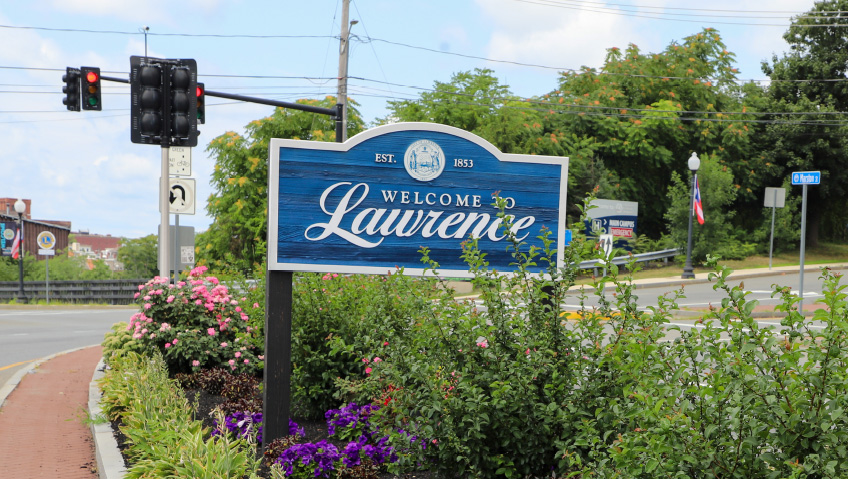It’s good to find a financial institution like CUA, a provider of services and benefits that open the door to brighter financial futures for its customers, and a place where everyone’s voice is heard.
Based in Halifax, Nova Scotia, CUA was founded in 1948. Now with eight branches located in the Halifax Regional Municipality (HRM) in a 50-mile radius, and a robust digital and mobile presence throughout the province, it serves over 20,000 members.
CUA provides a wide range of services, including personal banking, a wealth management services division, a commercial banking centre, and a dedicated customer contact centre. You could call CUA a perfect example of “the little bank that could” except for one important thing – it’s not a bank in the traditional meaning of the word.
Instead, CUA is a financial cooperative, where account holders are also shareholders. That, along with expertise in the Halifax market, are what truly differentiate it, defining the services it offers to individuals, businesses, non-profit organizations, and the wider community. This includes partnership with external organizations such as the Halifax Chamber of Commerce and Junior Achievement Nova Scotia, and the Community Partner Program, through which CUA members can access special offers at over 200 businesses.
In February 2016, CUA was recognized as a B Corporation (commonly referred to as a B Corp), having received certification from the international body that recognizes the work of for-profit entities that believe in using their business as a force for good, essentially those which put the needs of the community before profit.
Marie Mullally, President & CEO
It was our pleasure to speak with Marie Mullally as she enters her 11th year at the helm of CUA. She tells us that it’s one of the best organizations she has had the opportunity to work with.
“A big part of it is the culture and the way in which we serve our members,” she says. “It’s very much a community-based institution that is making a material impact on the lives of its customers, but also having an impact on our overall community.”
A graduate of Dalhousie University in Halifax, with Bachelor of Commerce and Master of Business Administration degrees, she says that she has a deep interest in business, but also a “really strong connection to the public sector, as my father had been a long-term provincial and federal civil servant, and I was always intrigued by the impact that sector has on the lives of the people it serves.”
Upon qualifying as a chartered accountant, she worked for the Department of Finance as an economist creating tax policy. She spent 22 years in government, ten of them as president and CEO of a crown corporation.
She says she was fortunate enough to work with governments “which were keen on improving the way they delivered services to both individual and business customers. I also had a lot of opportunities in those years to experience both the public sector and the private sector and to apply key business principles. And I did love business!”
She admits she didn’t choose this direction with a clear career path mapped out, “but when I was contacted by a recruiter in 2010, I was intrigued. As I learned more about banking and this company, I became keenly interested in being part of it. Banking is a great career path for anyone who loves business and loves to help others achieve their financial goals.”
Customers, investors – one and the same
Asked how CUA benefits clients, Mullally explains that the very nature of the structure of a financial cooperative is beneficial in that the customers are also the owners of the company; in other words, they are the shareholders.
This is in direct contrast with traditional banks, where the shareholders can be large institutional investors, such as pension plans, and they are not always the customers. “In our world, the customers and the investors are one and the same.”
This means that everything CUA does “is for the benefit of the customer because we don’t have a separate group of shareholders that we have to focus on for appreciation of their share value.
“Here, the goals of the customers are the same as the owners. Banks have to focus on publicly traded companies and keeping their shareholders happy while also trying to make their customers happy. But they are two separate groups and sometimes their interests can diverge, or even be in conflict.”
The absence of conflict at CUA is reflected in the way service is delivered. As a small banking institution, every financial benefit that accrues at CUA automatically goes back to the members, as “we reinvest in the business to provide better service, and better pricing and product offerings,” says Mullally.
One of CUA’s unique products is its “No Down Payment Mortgage”, which, as Mullally explains, is a great example of how the community is supported by creating access for first-time homebuyers who haven’t had the opportunity to build up funds for a down payment. They may have just graduated from university and started working, have clear potential and are financially responsible, but need a hand up to get them to the next stage of their lives.
“This plan,” Mullally says, “allows them access to homeownership by providing them with up to five percent of the purchase price in the form of a loan or line of credit that would cover the cost of their down payment.
“Very few financial institutions provide that kind of product, but we think having the ability to purchase a home is important and we see this as part of our community investment, part of building a stronger community.”
Big help to small business
In addition to helping individuals get off to a good start, CUA also offers a small business loan program developed with the provincial government, which gives it the ability to finance up to $500,000 for start-ups and gives entrepreneurs access to funding they might not otherwise be able to obtain.
Says Mullally, “We think it’s critical to make funding accessible for small businesses because they are key to the economic growth of any area.”
This partnership with the government has enabled CUA to offer financing to companies that don’t have a proven track record, including ones that may be new to the market and are looking for someone to take a leap of faith based on their concept. But before CUA offers that financing, it carefully vets applications on a case-by-case basis which looks at the viability of the business plan, and the character of the owner.
There’s also CUA’s Energy Efficiency Financing Program, which finances energy-efficient upgrades like LED lighting, solar panels, and heat pumps for homes and businesses at a very low interest rate. This has been one of the highest growth programs over the last two years.
CUA helps non-profit organizations, too. “We have a large base of organizations within our membership,” Mullally says, “and we work with them in a similar way as we do with our small businesses. We become a connector point and a relationship builder to help them with what they are trying to achieve as an organization.”
Investing in the community
In 2015, CUA introduced the Community Investment Grant Program, distributing financial grants to local businesses, non-profit organizations, and community initiatives in HRM. It has since expanded the size and scope of the program to include the entire province.
Over the last seven years more than $240,000 has been distributed directly to 70 recipients selected by CUA’s Member Advisory Council, based on each submitted project’s potential for a positive economic, social, or environmental impact on the community.
In 2021 there were 19 recipients, each of whom reported back on what was achieved by the funded project, describing quite exceptional results.
Mullally tells us the story of one recipient, Greenii Inc., a Halifax start-up that recycles paper waste and produces chemical and bleach-free paper bags from discarded newspapers and flyers. By reducing community use of plastics, the company’s efforts have had a measurable effect on the environment.
CUA’s funding enabled Greenii to purchase technical equipment that reduced production time by 50 percent, in the process creating seven new jobs. Five of them went to immigrant women and two to youth with disabilities, “so this is a great example of how impactful a relatively small amount, just $8,500, could be. Not only did [the funding] benefit the environment, it improved the operation and created jobs in marginalized areas of society where there is less opportunity to find employment.”
Another project Mullally describes involved the South Shore Sexual Health Centre, located in the Town of Bridgewater, which used its grant to fund their TRANSformation Closet Initiative, which supports youth in accessing gender-affirming gear during their transition process.
“We recognize the importance of diversity and inclusion, but we were amazed by the number of young people – which doubled the original estimate from 30 to 60 – who will be able to leverage this program to support their gender affirmation.”
In conclusion, she adds, “There’s a broad spectrum that we support through the social impact criteria of the Community Investment Program that will make Nova Scotia become a more accepting and inclusive place. I am very excited that we’re going to deliver this program again in 2022.”
At time of writing, CUA had earmarked $100,000 for the program. Applications were received between Jan 11th through the 28th, and CUA received over 500 applications requesting more than $4 million combined. The team is currently in the process of evaluating the submissions, and will be announcing the recipients on March 14th.






